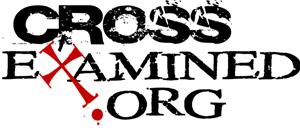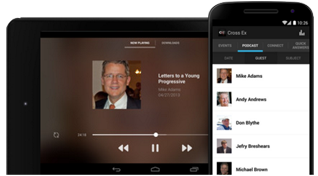My sixth grader ran through the front door sounding slightly short of breath. “My teacher is teaching a unit on world religions,” he huffed. “He’s going to teach us about Islam, Christianity, Egyptian gods and who knows what else!” As a fifth grade teacher I was aware of the California standards for fifth grade but this surprised me. World religions was part of the sixth grade standards? Low and behold, written into the California content standards for sixth grade social studies is the requirement for students to learn “ancient civilizations, religion, slavery, and delving into Hammurabi’s laws, sections of the Torah (first five books of the Bible), and Confucius.”[1]

My surprise wasn’t because I was worried about him learning opposing worldviews. I was surprised the curriculum took the students deep into these world religions. I wondered how the teacher would present the information to the students. Will he be unbiased? Biased? My son went forward with the unit, even taking a field trip to an Egyptian museum in Sacramento. It was an eye-opening experience that led us to deeper conversations about the Christian worldview in comparison to opposing worldviews.
Curriculum Change?
A few months ago, Texas became the latest state to integrate religion into their elementary school curriculum, joining states like Oklahoma and Louisiana.[2] As expected, the reaction to the news has caused a split of, let’s say, cheers and boos. But what I’ve seen is the revelation of false assumptions about worldviews in public education that I’ll address in this article.
- Assumption #1: Many people assume that religion and worldview hasn’t been taught prior to this decision.
- Assumption #2: Many people assume the public education system has always been neutral and must remain that way. I’ll explain why that’s not possible.
Worldview Integration
What Texas did was add an optional curriculum that infuses biblical stories and concepts into their lessons. It’s hardly teaching worldview, but I won’t split hairs. Schools do not have to adopt this curriculum but the Texas State Board of Education sweetened the deal by offering $60 per student if they do. For a teacher on a budget equivalent to that of a college student, that’s tempting. Consequently, this brought cheers from those who desire to see Christianity brought back into the public education system and boos from those who want to keep it out. It’s rare that anyone is neutral on whether or not religion should be taught in public education.
I want to pose something to think about for the cheerleaders and the boo hoo-ers of this decision. First, everyone needs to calm down because I don’t think it’s as simple as threading some Bible verses into a social studies unit and expecting you’ll get a student who thinks biblically. When it comes to biblical integration, we need to consider the three I’s of worldview formation:
- The instructor
- The instruction
- The integration
- Have you considered the instructor?
When it comes to education, and in this case, worldview development, it’s not only about what is being taught, it’s also about who teaches it. Every teacher has a worldview and just because she teaches some Bible verses from a teacher’s guide does not mean it will result in a student with a biblical worldview. As Martha MacCollough states in her book Undivided: Developing A Biblical Approach To Worldview Integration,
“Teacher and student must integrate their worldviews together, cooperatively measuring truth and reality by the standard of God’s word. If the teacher’s worldview does not align to the worldview behind the production of the curriculum, the program is fragmented, not cohesive. In other words, it lacks integrity or wholeness.”[3]
- Have you considered the instruction?
Teaching bible lessons is one thing; teaching students how to apply them is the necessary connection to worldview development. Therefore, MacCullough goes on to say that,
“Biblical worldview integration in an academic setting must be understood as a function of the curriculum.”[4]
In a public education environment this isn’t possible because the worldview behind the public education system is scientific naturalism. Again, a unit sprinkled with some Bible verses in elementary school is competing with Darwinian evolution in tenth grade science. And although according to The Texas Tribune the Texas Board of Education did add language that allowed students to pushback on evolutionary science, it’s still not a cohesive framework that provides integrity in worldview formation.
- Have you considered biblical integration?
To integrate means you “combine one thing with another so they become a whole.” In order to effectively teach from a biblical worldview so the result is a student with a biblical worldview, you must have a teacher with a biblical worldview, teaching a curriculum produced from a biblical worldview, across a school wide program with a unified philosophy of education. If that sounds a lot like the children’s book If You Give A Mouse A Cookie, it should.[5] An effective and cohesive program is going to set off a chain of events that puts everyone on the same page for worldview development. Otherwise, it’s not truly biblical integration. It’s just, as I said above, some Bible verses added into social studies content.
Addressing The Assumptions
From a biblical standpoint, the Bible is clear about whose responsibility it is to teach children about God and it’s not the school. But let’s not be so naive as to assume religion and worldview isn’t taught in school already. Darwinian evolution is taught to tenth grade science students every year and there isn’t one state in the United States where it isn’t. Where are the boo-hooers? Oh, they’re only upset if it’s content they disagree with.
Let’s get this straight: no one is neutral. Everyone is passionate about their passionately held beliefs and that’s to be expected. One side will always boo and the other side will always cheer; it’s just dependent on who gets their way.
So, for all of the Christian parents and educators out there where a biblical worldview is not only the correct framework for Christian education but is also expected, this is what I suggest: teach all of it. Teach Islam. Teach New Age. Teach Mormonism, Progressive Christianity, and competing worldviews. But do it on the foundation of biblical truth and teach kids why we shouldn’t be afraid to test the claims of all religions, including their own. After all, isn’t that what we want if we’re confident that what we believe is true? So no, the public educations system shouldn’t teach Christianity in school because they don’t have the framework for it to be effective. The reason my son’s 6th grade unit was enjoyable is because he was testing the claims of other worldviews in comparison with Christianity because we made sure it turned out that way. The school did not. Outside of that, we didn’t expect much else from the public education system by way of a Christian education. And neither should you.
New Course For 7th-9th Graders!
Are you looking for curriculum to help your 7th-9h grader test the claims of major worldviews and religions? Check out our brand new course Expedition To Reality beginning on February 24th at OnlineChrstianCourses.com. This is an 8 week course that builds on the foundation of the core tenets of Christianity while learning about Islam, New Age, Marxism, Progressive Christianity and more. Join the expedition before it’s too late!
Sign-Up Now for the New Course:
Expedition to Reality
Starting February 24th
References:
[1] https://www.scoe.net/media/ykyfx3ri/parent_overview_hss_6-8.pdf
[2] https://www.newsnationnow.com/us-news/education/states-push-incorporate-religion-school-curriculums/; https://www.texastribune.org/2024/11/19/texas-sboe-bible-christianity-curriculum/
[3] Martha MacCullough, Undivided: Developing A Biblical Approach To Worldview Integration (Colorado Springs, CO: Purposeful Design Publications, 2016), ch. 1
[4] Ibid.
[5] Laura Numeroff and Alicia Bond, If You Give a Mouse a Cookie (New York: Harper Collins, 2015).
Recommended Resources:
Counter Culture Christian: Is the Bible True? by Frank Turek (Mp3), (Mp4), and (DVD)
How to Interpret Your Bible by Dr. Frank Turek DVD Complete Series, INSTRUCTOR Study Guide, and STUDENT Study Guide
Jesus, You and the Essentials of Christianity by Frank Turek (INSTRUCTOR Study Guide), (STUDENT Study Guide), and (DVD)
Tactics: A Game Plan for Discussing Your Christian Convictions by Greg Koukl (Book)
Shanda Fulbright is a credentialed teacher and has a certificate in Christian Apologetics from Biola University, a certificate from the CrossExamined Instructor’s Academy as well as several certificates from Online Christian Courses. She hosts Her Faith Inspires podcast where she takes cultural issues and aligns them to biblical truth. You can read her blogs and find out more about her at shandafulbright.com.














Facebook Comments